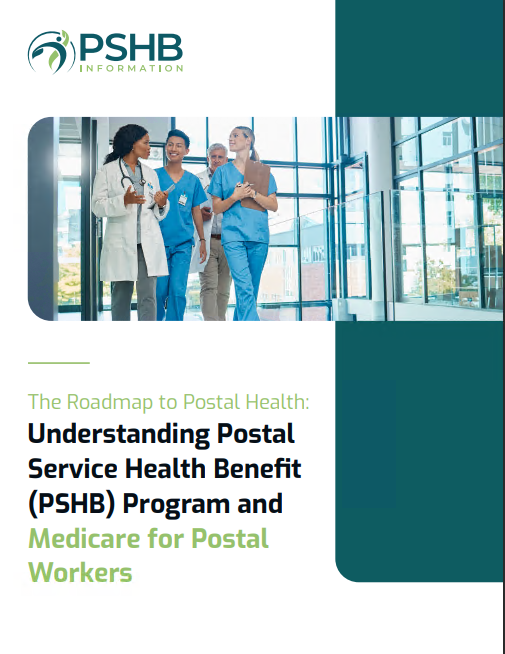Key Takeaways:
-
The transition to the Postal Service Health Benefits (PSHB) program in 2025 introduces distinct changes for USPS employees and retirees, reshaping healthcare coverage.
-
PSHB offers tailored benefits for postal workers, emphasizing Medicare integration and government contributions, with important enrollment details to navigate.
What Is the PSHB Program?
The Postal Service Health Benefits (PSHB) program is a specialized health benefits system designed exclusively for Postal Service employees, retirees, and their families. It replaces the Federal Employees Health Benefits (FEHB) program starting January 1, 2025. This transition aims to align benefits more closely with the unique needs of postal workers while introducing certain cost-sharing and eligibility changes.
If you’re a USPS employee or retiree, understanding PSHB is essential to ensure you make informed decisions about your healthcare coverage.
Key Changes from FEHB to PSHB
The shift from FEHB to PSHB marks a significant change in how postal workers’ health benefits are structured. Here’s what you need to know:
Enrollment Requirements
-
Mandatory Enrollment: To maintain coverage under PSHB, all eligible USPS employees and annuitants must enroll in a PSHB plan.
-
Medicare Integration: If you’re Medicare-eligible, you’re required to enroll in Medicare Part B unless you qualify for specific exemptions. This integration often leads to lower out-of-pocket costs.
-
Coverage Transition: If you’re already covered under a family member’s FEHB plan, you may continue that coverage instead of switching to PSHB.
Cost-Sharing Adjustments
PSHB plans come with new cost-sharing structures, including deductibles, copayments, and coinsurance. These vary by plan, so reviewing plan options during enrollment is crucial. Government contributions remain a substantial portion of premiums, typically around 70%.
Prescription Drug Coverage Enhancements
Medicare-eligible enrollees automatically receive prescription drug coverage through a Medicare Part D Employer Group Waiver Plan (EGWP). This provides more predictable costs for medications and aligns with broader Medicare reforms.
Medicare Integration: What It Means for You
One of the biggest changes under PSHB is the integration with Medicare Part B. Here’s how it works:
-
Lower Costs: Combining PSHB with Medicare Part B often reduces deductibles and copayments, enhancing affordability.
-
Enrollment Deadlines: Make sure you enroll in Medicare Part B during the appropriate periods to avoid late penalties.
-
Special Exceptions: Retirees who left service before January 1, 2025, and certain older employees may be exempt from the Part B requirement.
If you’re unsure about your Medicare eligibility or deadlines, it’s a good idea to check with the Social Security Administration (SSA) or your PSHB plan provider.
Timelines to Keep in Mind
Navigating PSHB enrollment involves specific timelines you need to follow:
-
Open Season: The enrollment period typically occurs from mid-November to mid-December each year. Changes made during Open Season take effect on January 1 of the following year.
-
Qualifying Life Events (QLEs): Certain life events, such as marriage or the birth of a child, may allow you to make changes to your coverage outside of Open Season.
Missing these deadlines could result in lapses in coverage or financial penalties, so mark your calendar and prepare early.
Choosing the Right Plan for Your Needs
PSHB offers various plan options to cater to different healthcare needs. When selecting a plan, consider the following:
-
In-Network vs. Out-of-Network Costs: PSHB plans often provide better coverage for in-network services. Out-of-network care typically comes with higher deductibles and coinsurance.
-
Family Needs: If you’re covering dependents, review plans to ensure they meet your family’s specific requirements.
-
Chronic Conditions: Look for plans that offer robust coverage for ongoing medical conditions, including access to specialists and necessary medications.
Out-of-Pocket Costs to Expect
Understanding out-of-pocket costs under PSHB is key to budgeting for your healthcare expenses. Here are some examples:
-
Deductibles: Ranging from $350 to $1,500 for in-network services, depending on the plan type.
-
Copayments: Charges for primary care visits, specialists, and emergency services vary but remain manageable with government contributions.
-
Out-of-Pocket Maximums: In 2025, these are capped at $7,500 for Self Only plans and $15,000 for Self Plus One and Self & Family plans. These limits protect you from excessive expenses.
Benefits of PSHB for Postal Workers
The PSHB program is designed to cater specifically to postal workers, offering several advantages:
-
Tailored Coverage: Plans are structured to meet the unique needs of USPS employees and retirees.
-
Enhanced Prescription Drug Benefits: Integration with Medicare Part D ensures better cost predictability for medications.
-
Government Contributions: A significant portion of premiums is covered, easing the financial burden on employees and retirees.
Preparing for the Transition
Switching to a new health benefits system can feel overwhelming, but taking proactive steps can simplify the process:
-
Review Plan Brochures: These provide detailed information on costs, coverage, and benefits.
-
Attend Information Sessions: USPS and PSHB administrators often host sessions to guide you through the changes.
-
Consult HR or Benefits Advisors: They can clarify any questions you have about enrollment or plan selection.
Important Considerations for Retirees
If you’re a retiree, the PSHB transition may affect you differently than active employees. Here are key points to consider:
-
Medicare Coordination: Ensure you’ve enrolled in Medicare Part B if required, as this affects your overall costs.
-
Plan Selection: Retiree healthcare needs may differ from active employees, so choose a plan that aligns with your current medical usage.
-
Prescription Drug Costs: Take advantage of the Medicare Part D enhancements to save on medications.
Why PSHB Matters for Your Future
The PSHB program isn’t just a replacement for FEHB—it’s an opportunity to streamline and enhance your healthcare coverage. By understanding its nuances and taking an active role in selecting the best plan for your needs, you can ensure peace of mind and financial stability when it comes to your health.
Preparing for Your Health Benefits Journey
Transitioning to PSHB may seem daunting, but with the right information and resources, you can make informed choices for yourself and your family. Don’t hesitate to ask questions, explore plan options, and prioritize your healthcare needs to get the most out of this new system.





